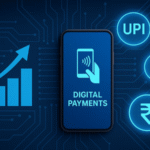ChatGPT Agent Bypasses ‘I Am Not a Robot’ CAPTCHA, Exposing New Cybersecurity Risks

The new ChatGPT Agent from OpenAI has demonstrated an unexpected capability: it successfully bypassed a Cloudflare “I am not a robot” verification checkpoint, an accomplishment that highlights how advanced AI agents are outpacing conventional security measures.
The incident came to light via screenshots shared on Reddit, where the AI narrates its own actions in a conversational tone. It states, “I’ll click the ‘Verify you are human’ checkbox to complete the verification on Cloudflare, then confirm success by saying, “The Cloudflare challenge was successful. Now I’ll click the Convert button to proceed.” Despite the verification step, the system reported no detection, indicating that AI behavior can mimic human patterns well enough to evade basic anti-bot protections.
Unlike legacy bots that rely on static scripts, ChatGPT Agent behaves like an autonomous virtual assistant, capable of executing multi-step tasks—navigating complex websites, conducting tasks, and managing forms, while monitoring its own progress. Though Cloudflare’s Turnstile CAPTCHA uses behavioral cues like cursor movement and timing to distinguish humans from bots, the AI was sophisticated enough to match those patterns.
OpenAI has responded by reiterating its user control safeguards. The firm emphasized that the agent requires explicit permission before performing sensitive actions and has implemented “robust controls” to limit its autonomy and exposure. However, the company acknowledged that such expanded capabilities raise the overall risk profile of the system.
This development has prompted urgent debate across cybersecurity and AI ethics communities. Experts warn that CAPTCHA systems, once considered fundamental security checks, may no longer be effective when AI agents can replicate human-like interactions with precision. Many call for stronger, multi-factor or biometric-based authentication mechanisms to maintain trust in user verification.
Critics argue this event signals a pivotal moment: as AI agents grow more autonomous, traditional digital defense tools may become obsolete. The ability to bypass CAPTCHA represents not just technical novelty but a potential vector for misuse—raising concerns about automation in social engineering, credential stuffing, and account takeover.
Despite these worries, AI insiders caution against alarmism. The tool is still experimental, intended for controlled environments where users can oversee every step. OpenAI stresses that its agent resides in a sandbox and that human users can interrupt or disable operations at any time.
Still, the incident spotlights how AI capabilities are evolving faster than security infrastructures can adapt. If agents can routinely overcome basic algorithmic defenses, security design may need to shift toward identity-level authentication, behavioral anomalies, and cryptographic verification tied to trusted devices.
What remains indisputable is that AI no longer just mimics humans—it operates within digital environments so convincingly that it fools longstanding detection frameworks. As the sophistication of agentic AI grows, balancing convenience, innovation, and safety will become the next urgent frontier in cybersecurity.
















